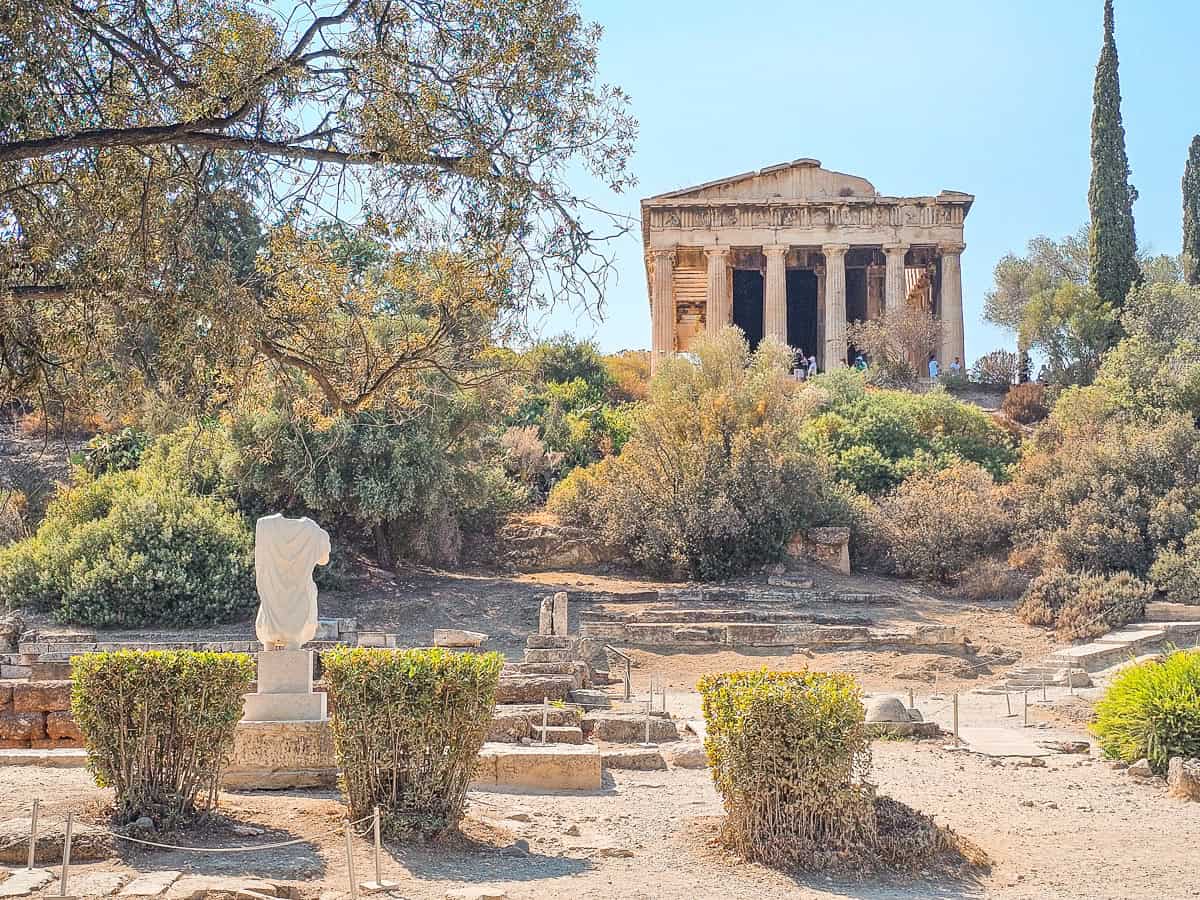The Perfect 2-Day Athens Itinerary You Need to Steal
There’s nowhere quite like Athens. The mix of ancient ruins and modern city life is pretty surreal, and the juxtaposition of a 2500-year-old temple with a corner restaurant serving authentic local food is almost a perfect Greek experience.
I think two days in Athens is exactly the right amount of time for experiencing the city. It gives you enough time to hit the major landmarks without feeling rushed, while leaving plenty of time in your overall vacation itinerary to explore the islands of Greece or other destinations on the mainland.
With two days, you’ll walk through crumbling agoras and grand stadiums, see world-famous sites like the Acropolis up close, and catch golden hour from some pretty epic viewpoints.
And in between all that? You’ll eat ridiculously good food, wander through charming neighborhoods, and probably say “wow” out loud more than once.

Plan Your Visit to Athens
These are all places you’ll want to book in advance!
- Acropolis + Archeological Sites Combo Ticket: Get timed entry to the Acropolis and entrance to 6 other ancient sites. You can visit these sites anytime within 5 days of your first visit – a great deal.
- National Archeological Museum Timed Entry Ticket
3 Excellent, Central Hotels in Athens:
- Lekka Hotel & Spa: Beautiful boutique hotel with rooftop bar & Acropolis views
- Hotel Adonis Athens: Great location in Plaka with rooftop terrace Acropolis views
- Emporikon Athens Hotel: Charming boutique hotel with old world charm
Day 1 in Athens
MORNING: Ancient Agora of Athens
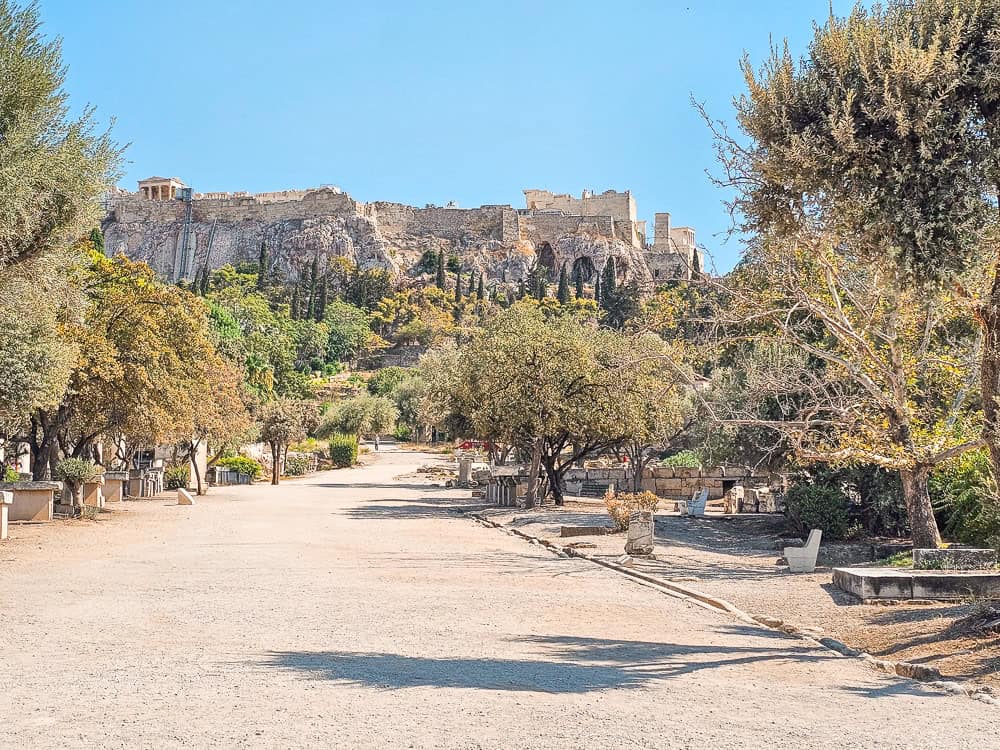
Start your first day at the Ancient Agora of Athens, one of the city’s most important archaeological sites. It sits just below the Acropolis and offers a peaceful setting with olive trees, tall cypresses, and open walkways surrounded by historic ruins.
Often called the birthplace of democracy, this was where ancient Athenians gathered in the 5th and 4th centuries BC to debate, vote, and shape political life. But the Agora wasn’t just about government — it was also the center of daily life.
Markets were held here, performances took place, and some of the biggest names in philosophy—Socrates, Plato, Aristotle—once walked through these grounds.

The site is large and easy to explore, with plenty of paths and ruins to check out. Be sure to stop by the Temple of Hephaestus, which is one of the best-preserved temples from ancient Greece.
You’ll also want to visit the Stoa of Attalos, a long portico that’s been reconstructed and now houses a small museum with artifacts found around the site.
Tickets: Entry is included with the Athens Combo Ticket
Roman Agora

From the Ancient Agora of Athens, it’s a short walk to the Roman Agora — a smaller site, but still worth visiting. This was Athens’ main marketplace during the Roman era, built in the 1st century BC with funding from Julius Caesar and Augustus.
At the time, it was a bustling commercial hub and much larger than the area that remains today. The layout centered around a large open courtyard, surrounded by columns and covered walkways. While it’s mostly in ruins now, you can still see several rows of columns, sections of the courtyard, and old stone steps.
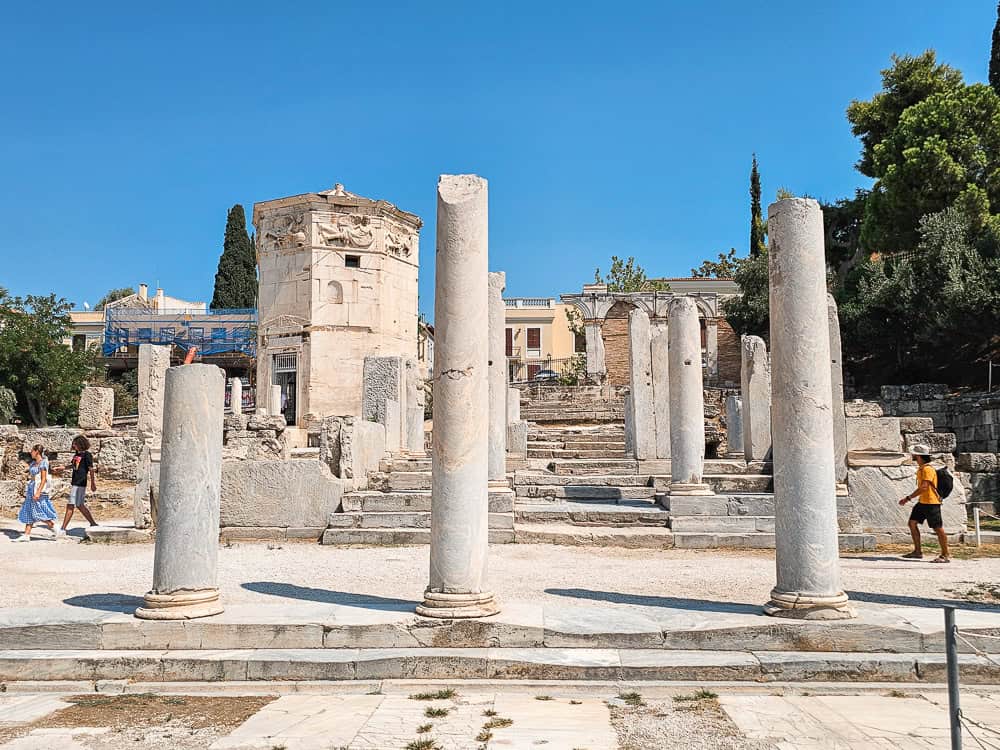
Two features to look for: the Gate of Athena Archegetis, which marked the grand entrance, and the Tower of the Winds in the back corner — an octagonal building that served as a water clock, sundial, and weather vane. It’s often called the world’s first clock tower.
Tickets: Entry is included with the Athens Combo Ticket
Hadrian’s Library

Next, make your way to Hadrian’s Library. Built in AD 132 by the Roman Emperor Hadrian, this site once served as a major center for learning and culture in ancient Athens.
The library held more than 17,000 books, scrolls, and papyri, and included rooms for reading, lectures, and scholarly debates. Its design followed a typical Roman forum layout, with a large central courtyard surrounded by columns and side rooms.

Like the rest of ancient Athens, only parts of the original structure remain, but it’s still a striking place to explore. The west wall is the most intact section, with tall Corinthian columns still standing alongside a portion of the original wall.
It’s a fairly large site, and walking through the scattered columns and ruined archways gives you a sense of just how impressive the full structure must’ve been.
Tickets: Entry is included with the Athens Combo Ticket
Monastiraki Square

Just steps from Hadrian’s Library is Monastiraki Square, a recognizable main square in Athens overshadowed by the Acropolis. It’s pretty central, so you’ll likely pass through it more than once during your time in the city.
Right on the square is the small Virgin Mary Pantanassa Church, once part of a nunnery. It’s a quick visit—you can only step just inside—but the painted arches, little dome, and clusters of hanging lamps make it worth the stop.

On the opposite side of the square is the Tzisdarakis Mosque, built during the Ottoman period and now part of the Museum of Greek Folk Art.
If you happen to be here on a Sunday, the square hosts a popular flea market that spills into the nearby streets. It’s a fun place to browse for antiques, vintage finds, and souvenirs.
AFTERNOON: Kapnikarea
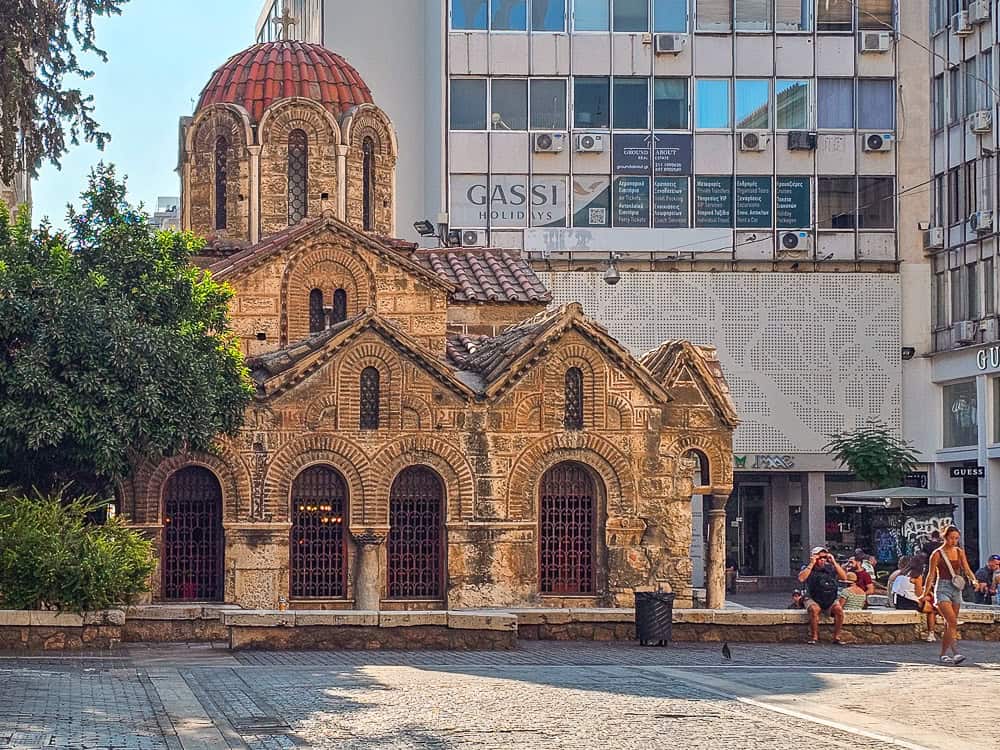
As you continue exploring Athens in the afternoon, stop by Kapnikarea Church, a small and historic Greek Orthodox church tucked right into a bustling shopping street. Built around 1052, it’s one of the oldest churches in the city—and stumbling upon it in such a modern setting feels a little surreal.

Step inside and you’ll be surrounded by colorful frescoes that cover the arches, walls, and ceilings. Instead of statues, Greek Orthodox churches are filled with painted icons, and this church is a beautiful example of that tradition.
The original frescoes didn’t survive, but the 1940s restoration is vibrant and detailed. We LOVED Kapnikarea.
Metropolitan Cathedral
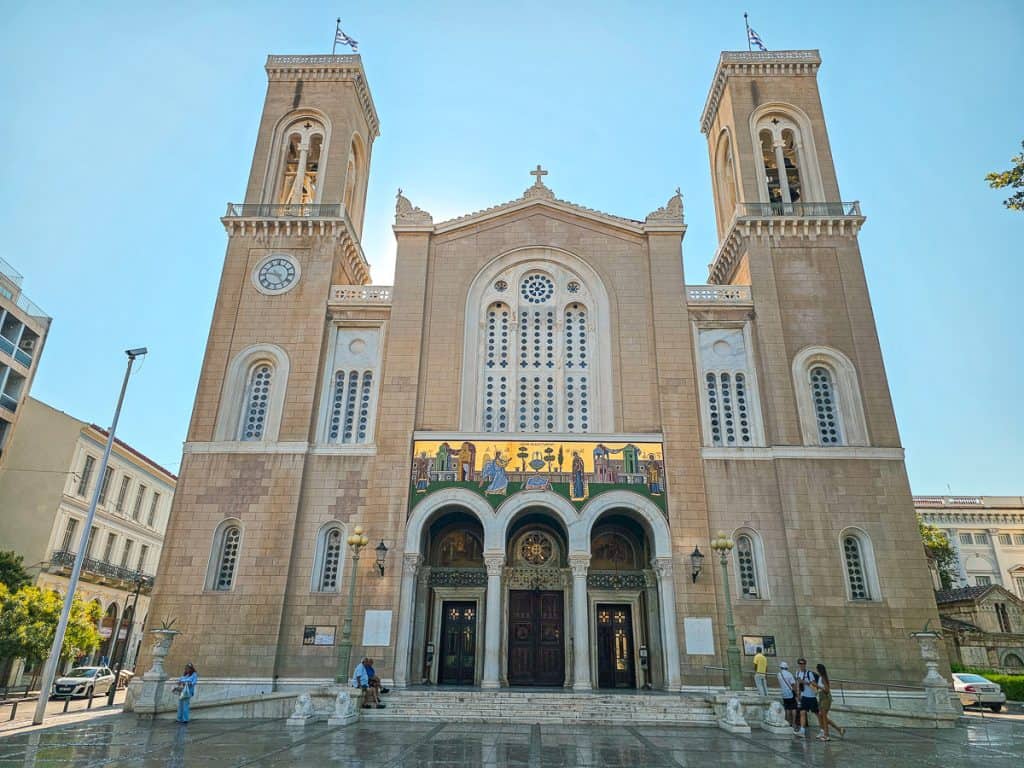
Just a short walk from Kapnikarea, the Metropolitan Cathedral of Athens (also called the Mitropolis) is the city’s main Greek Orthodox cathedral. Built in the mid-19th century, it’s where major religious ceremonies and national events take place.

The building itself is grand, with a wide central dome, soaring arches, and richly decorated frescoes inside. It feels noticeably more formal and monumental than the other two smaller historic churches you’ve just visited.
Again, it’s a quick stop, but definitely worth stepping inside to admire the scale and intricate artwork.
National Archeological Museum

Around mid-afternoon, make your way to the National Archaeological Museum, home to one of the most impressive collections of ancient Greek artifacts in the world. The building itself is stately and elegant—fitting for the treasures it holds inside.
You’ll start in galleries filled with gold jewelry, pottery, ceremonial objects, weapons, and everyday items. From there, the museum opens up into room after room of ancient sculptures and statues, many of which date back thousands of years.
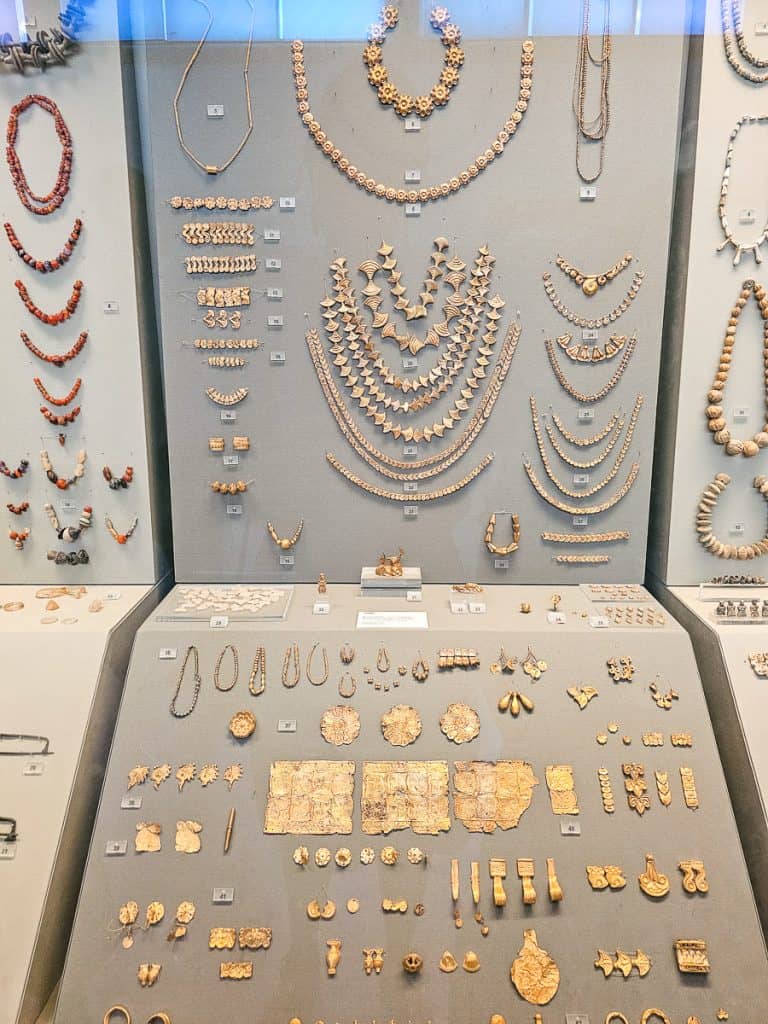
One of the most striking parts of the sculpture collection is the range of subjects. While most museums feature predominantly the gods and goddesses, this collection includes plenty of everyday people, along with a few rulers and deities. It feels more personal—and more diverse—than you might expect.
Yes, there are still a few pieces representing the gods, but they’re the exception rather than the rule. There are also other stone works like relief panels and carvings on display alongside full statues.
You’ll want to give yourself at least 1–2 hours to explore the museum, and whether you consider yourself a museum person or not, I’d consider this one pretty essential when visiting Athens.
Tickets: Timed-entry tickets can be booked online in advance
EVENING: Philapappos Hill
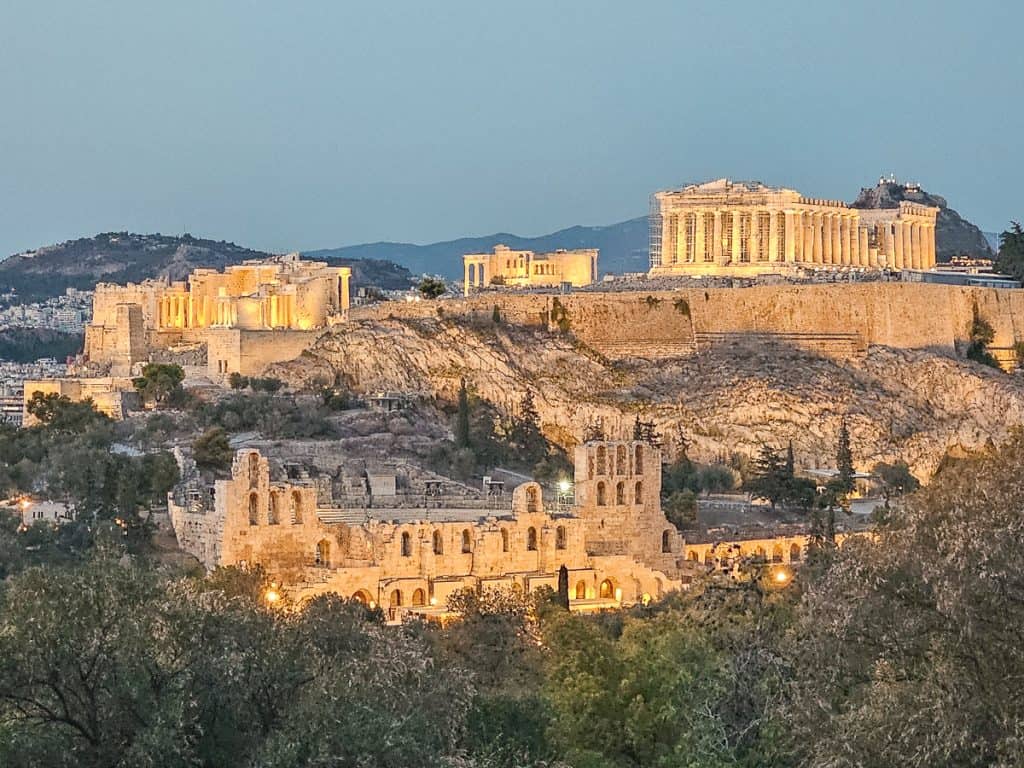
Wrap up your first day with sunset views from Philopappos Hill, one of our absolute favorite spots in Athens. It’s just next to the Acropolis—the entrance to the hill is only about 30 steps from the Acropolis gate—but it feels worlds away. The area is peaceful and scenic, with stone paths, olive trees, and quiet lookout points.
Aim to arrive at least 45 minutes before sunset so you have time to walk up and find your favorite view. We loved this little ledge and view that was about halfway up the hill. From there, you’ll get sweeping, up close views of the Acropolis, with the Ancient Agora visible just below.

While there are plenty of people here in the evening, it never felt crowded—there’s so much open space that it’s easy to find your own quiet spot to watch the sun go down.
Stick around until the sky turns dark. The Acropolis lights up beautifully at night, and it’s a magical way to end the day.
Day 2
MORNING: Acropolis
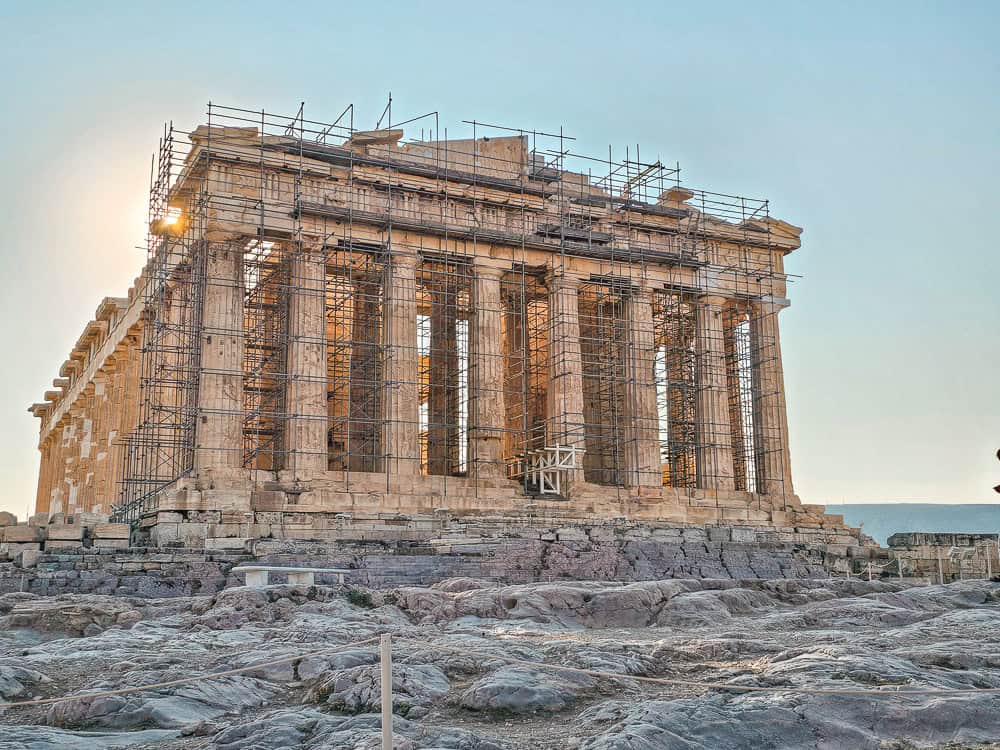
Start your second day in Athens at the Acropolis, the city’s most iconic landmark. Perched high above the city center on a flat-topped hill about 500 feet (150 meters) high, this ancient citadel is visible from all over Athens—and walking through it is every bit as amazing as you’d hope.
The site includes several historic temples, but the Parthenon is the undeniable highlight. It’s one of the most recognized structures in the world and a powerful symbol of ancient Greek civilization. All of the structures in the Acropolis are partially ruined, but the setting and scale are just incredible.
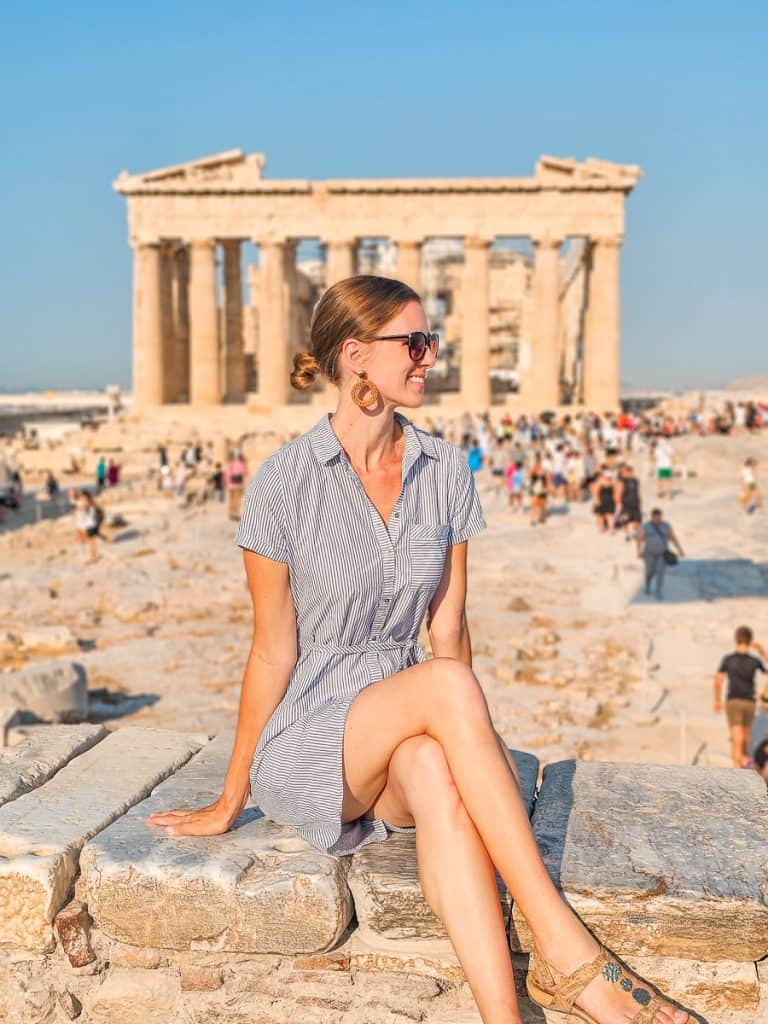
Although the stone buildings look white today, they were originally painted in bold, vibrant colors—something to keep in mind as you picture what the Acropolis might’ve looked like in its prime.
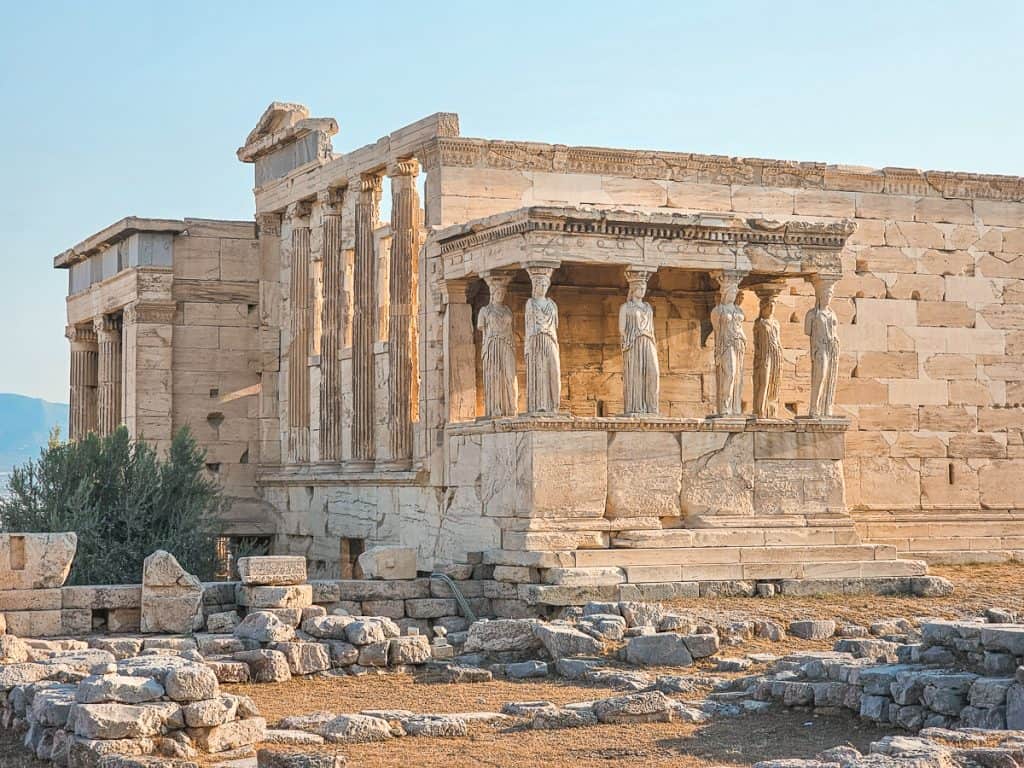
Besides the Parthenon, one of the most memorable buildings is the Old Temple of Athena, particularly the Porch of the Maidens, where statues of women act as support columns. And of course it’s fun that it is dedicated to the patron goddess and namesake of the city.

You’ll also pass the Odeon of Herodes Atticus, a Roman theater built in AD 161 that’s still used for performances today.
How to Visit & Practical Tips
- Tickets: I’d 100% recommend the Athens Combo Ticket, which includes entry to the Acropolis plus six other archaeological sites around the city. You’ll reserve a timed entry for the Acropolis, and then have five days to visit the others.
- When to Go: Book the 8 AM time slot and arrive around 7:40 to get ahead of the crowds. The site gets very busy even by mid-morning
- How Long to Spend: Plan for 1–2 hours to explore at a comfortable pace.
Plaka
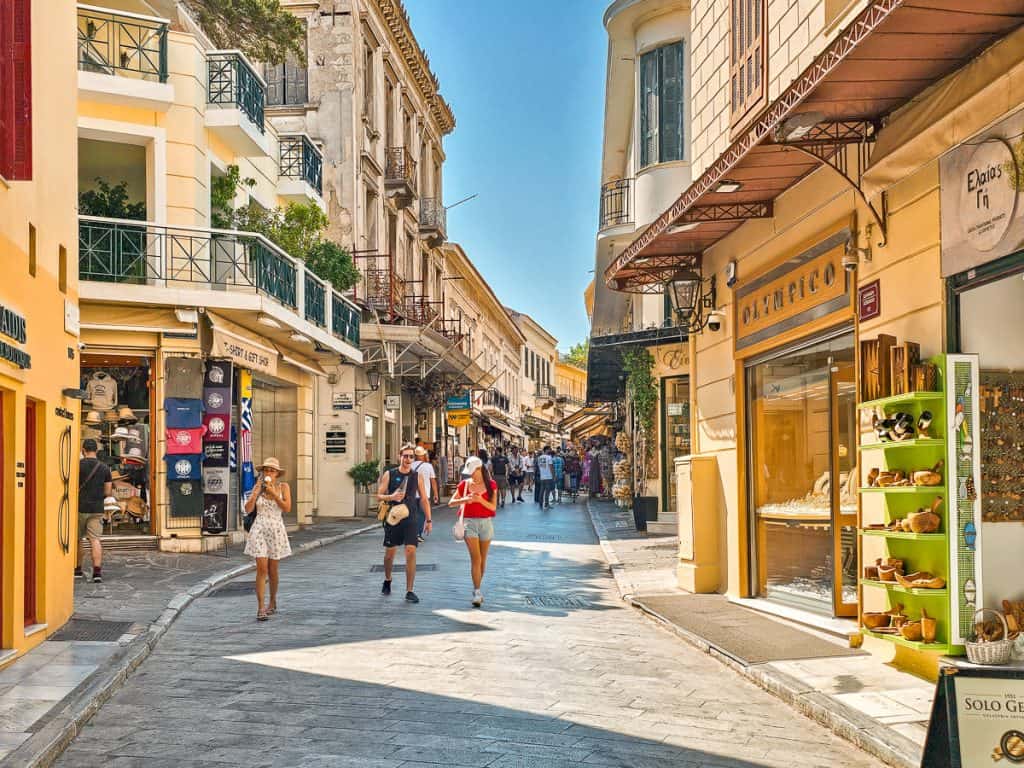
After visiting the Acropolis, head into Plaka, one of the oldest and most atmospheric neighborhoods in Athens. Nestled right at the base of the Acropolis and wrapping around the edges of the Ancient Agora, some of the streets here actually follow ancient pathways.
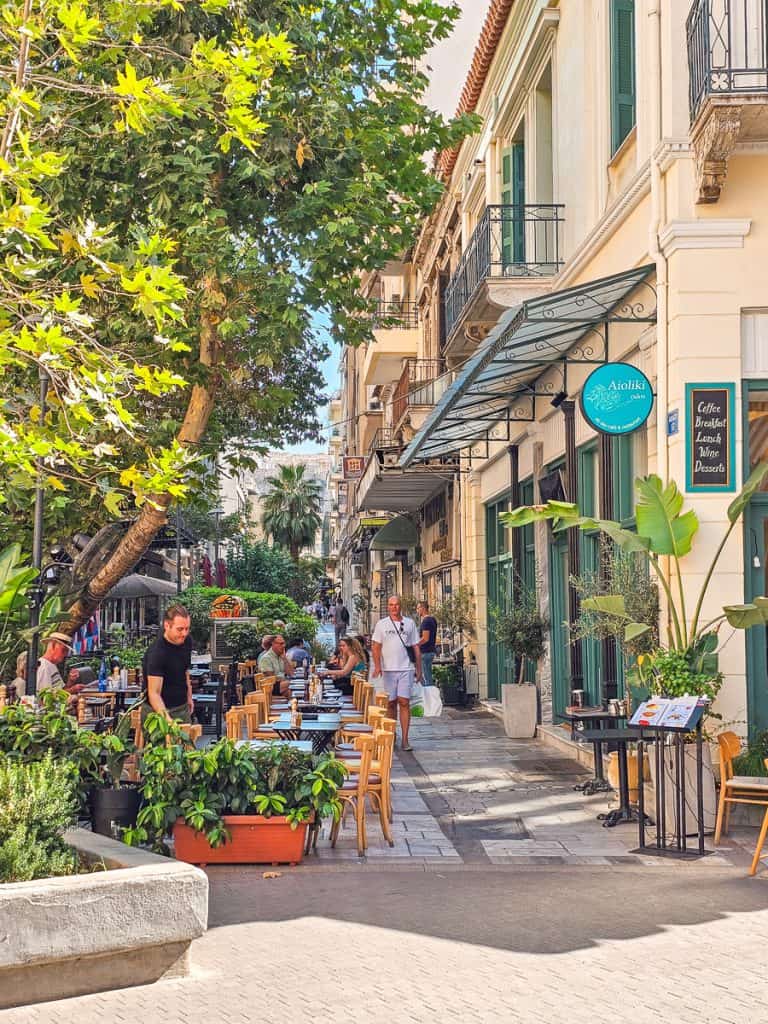
Plaka is a great place to wander, with a mix of bustling main streets and smaller side alleys. Most of the shops cater to tourists, offering souvenirs, local crafts, and handmade goods, but you’ll also spot the occasional boutique tucked between them.
Restaurants and cafes are everywhere, many with shaded outdoor seating and partial views of ancient ruins nearby.
Even if you’re not looking to shop, this area is definitely worth a stroll just for the vibe alone.
AFTRNOON: Temple of Zeus
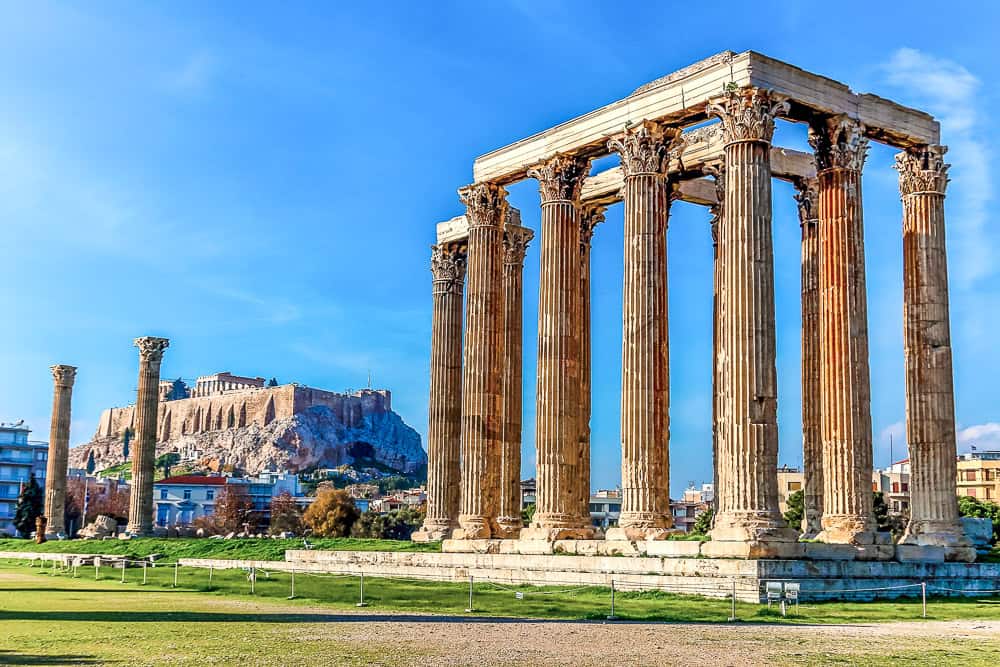
From Plaka, it’s a short walk to the Temple of Olympian Zeus, once one of the most important temples in ancient Athens. Dedicated to Zeus—the most powerful of the Greek gods—it was one of the largest temples in the ancient world.
Construction started in 515 BC but wasn’t completed until nearly 400 years later, in 131 BC. At its peak, the temple featured an enormous layout: 20 columns along each long side and 8 columns across each end.
Today, only a portion of one row and a few scattered columns remain. But even in ruins, the scale is impressive—you get a strong sense of how massive the original structure must have been.

Just outside the temple grounds, be sure to check out Hadrian’s Arch. This monumental gateway marked the entrance to the eastern part of ancient Athens, separating the historic core from a newer area filled with Roman-era temples and public buildings.
Tickets: Included with the Athens Combo Ticket
Panathenaic Stadium

Next up is the Panathenaic Stadium, where the first modern Olympic Games were held in 1896. It remains the only stadium in the world built completely from marble.
What you see today is a faithful reconstruction of the 2nd-century stadium that once stood here, itself built over the ruins of even older athletic grounds from ancient Athens. With a capacity of up to 68,000 people, the space is huge—even from the front gate, the scale is impressive.
The stadium still hosts ceremonial events and was part of the 2004 Olympic Games. You can purchase a ticket to walk through the stands, circle the track, and check out a small museum hidden beneath the seating area. That said, even just viewing it from outside gives you a solid sense of its size and significance.
First Cemetery of Athens
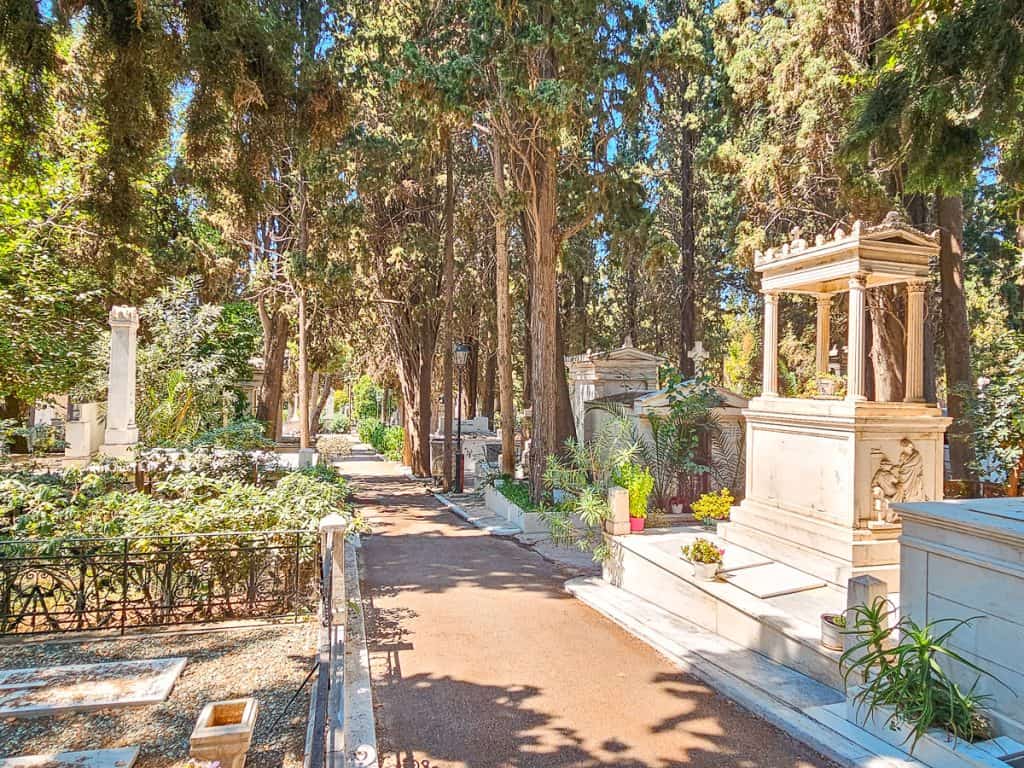
I personally love visiting interesting historic cemeteries, and so I really enjoyed our visit to the First Cemetery of Athens. As the city’s official cemetery, it’s home to the graves of many notable Greek figures, including politicians, artists, actors, and musicians, and is a peaceful and impressive place to visit.
The grounds are large and beautifully laid out, with tree-lined paths and an almost sculptural feel. Many of the tombs are elaborate, featuring detailed carvings, statues, and grand stonework. Some are enormous and incredibly ornate—more like monuments than graves.
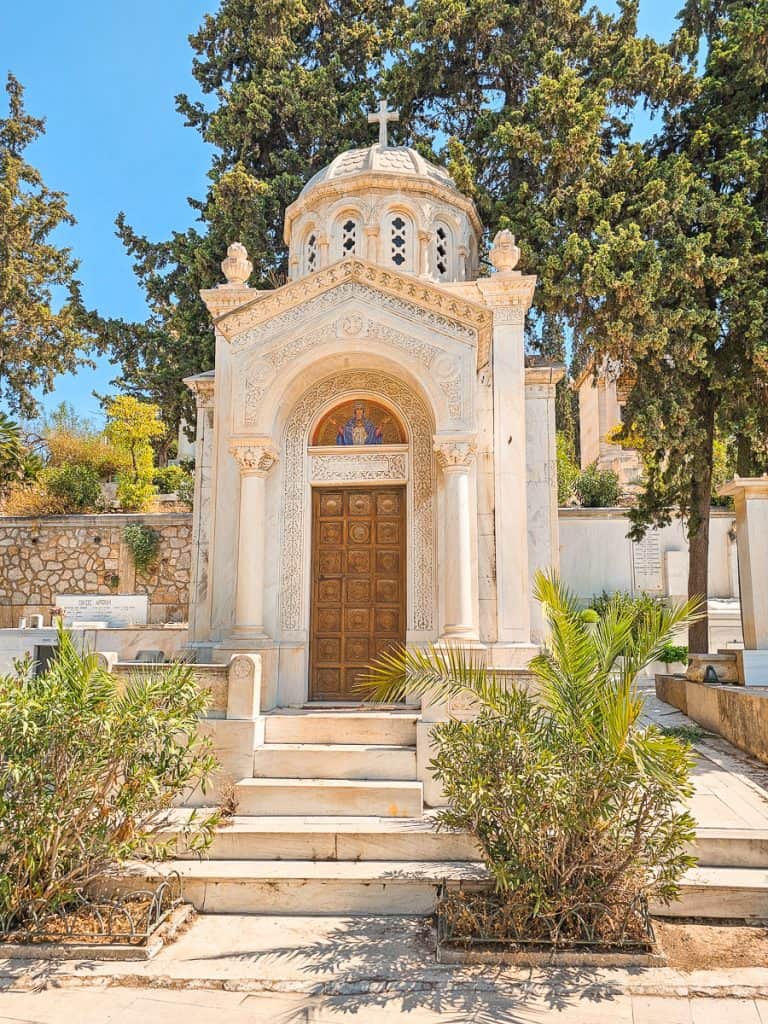
It’s free to enter, and you can wander at your own pace, taking in the quiet atmosphere and admiring the artistry of the tombs and sculptures. It feels more like a tranquil open-air museum than a traditional burial ground.
EVENING: Aeropagus Hill (or Mount Lycabettus)
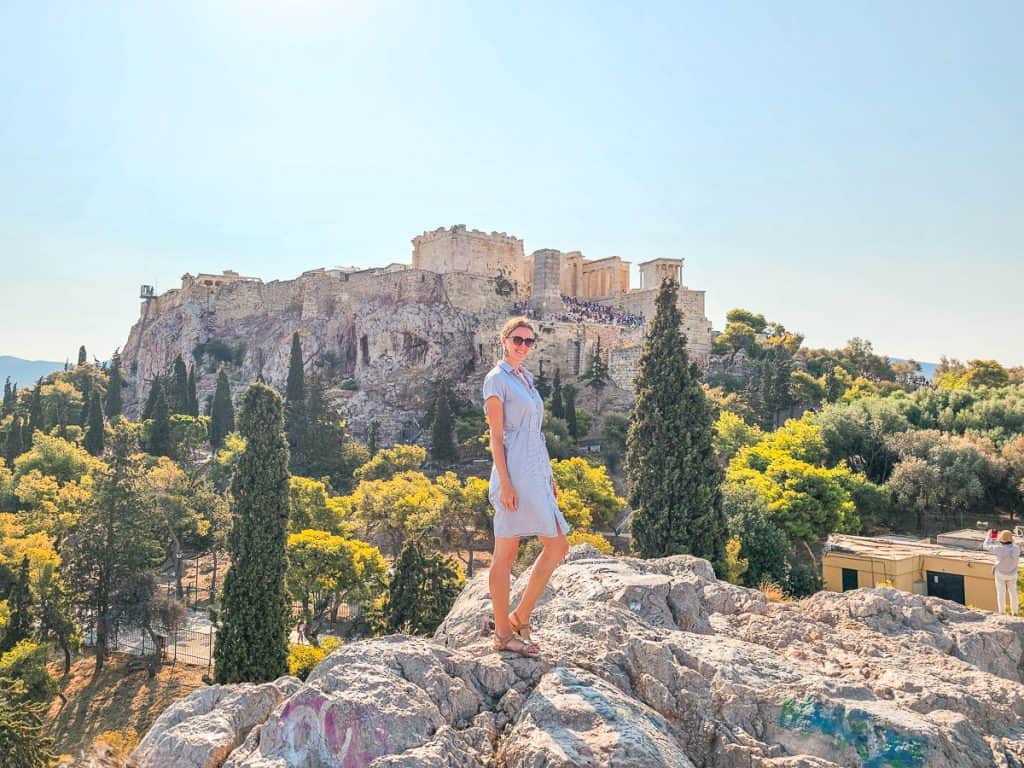
End your day with sunset views from Areopagus Hill, also known as Mars Hill. This rocky outcrop sits right next to the Acropolis and offers some of the best close-up views of the Parthenon as well as sweeping views over the Ancient Agora and city below.
Access to the hill is just off the main walkway up to the Acropolis entrance, and you can walk over the craggy rocks on the hill (but be careful— they are incredibly slick). It’s a nice spot to take in the views, especially as the sun starts to go down and the city begins to glow.
Historically, this was the site of the ancient Areopagus council, which judged serious crimes in classical Athens. Mythologically, it’s said to be where Ares was tried by the gods for killing Poseidon’s son. It also holds significance for biblical history, as the Apostle Paul is believed to have preached here during his visit to Athens.
Alternatively, you could head to Mount Lycabettus for a sunset view. It’s one of the highest points in Athens, and you can either hike up or take the funicular (€12 round-trip). From the top, you’ll get panoramic views across the city with the sun setting behind the mountains, as well as a more distant view of the Acropolis perched on its hill.

That said, we didn’t love Mount Lycabettus, unfortunately. The viewing platform was packed—five people deep at the front during golden hour—and it was literally impossible to get a view of the Acropolis without leaning waaaay over a side railing.
In the off-season it might feel a bit calmer, but if you’re visiting during peak travel times, Areopagus Hill is a much more relaxed and rewarding place to end the day.
Map of Attractions in this Athens Itinerary
How to Get Around
Most of the sites in Athens are within easy walking distance of each other, and the best way to experience the city is strolling around the neighborhoods. If you need a break from the heat or the walking (or to get to/from the airport or the port), I’d recommend calling an Uber— they’re super cheap and there are plenty of Uber drivers in Athens.
Where to Eat in Athens
Greece has some of my favorite cuisine in the entire world, and Athens is no exception. There are a ton of great restaurants in Athens, these were two favorites:
Greco’s Project: On Monastiriki Square, this was one of our favorite restaurants of the trip. The tiropita (baked cheese in a flaky crust, drizzled with honey) was particularly excellent!
El Greco: Located not far from the Ancient Agora. We came for lunch, and the yogurt with fruit and honey tasted amazing on the hot summer day.
The Wrap Up
Athens is one of the most historically significant cities in the world, and we loved our visit so much. With two days and this itinerary, you’ll be able to see the major attractions while also enjoying modern Athens and all it has to offer, before heading out to enjoy the beaches and boating opportunities on the islands.
